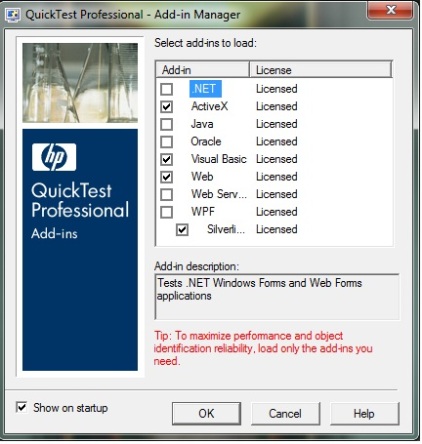Hello everyone, welcome back to all to my blog….
Last time we discussed about what is automated testing and a brief description about QTP. I had also pointed out some basic working mechanisms of QTP. Actually it is just a theoretical knowledge but quiet useful if you are a new to QTP and want to learn it. By following the basic methods you can easily test the application on you own.
I hope this blog can help you guyz a lot in gaining more knowledge in QTP.
The basic working mechanism of QTP are as follows:
a) Recording
b) Object Identification
c) Expert View
d) Parameterization
e) Checkpoints
f) Output Values
g) Report.Report Event
a) Recording
- Simply records the activities that is performed by the tester.
- QTP remembers and uses the same settings for additional record sessions on the same test.
b) Object Identification
- Uses “Human” like technology.
- Learn properties of a GUI object at record time.
- Compares the stored object properties with actual properties.
- Stored object and its properties is called Test Object.
- Quick Test is also known as “Test Object Model”.
- Concept of Object repository.
c) Expert View
- Each line represent a Test Step in VB Script.
- Object’s Name is displayed in parentheses following the Object Type.
- Objects in Object Hierarchy are separated by a “dot”.
- Operation performed on the object is always displayed at the end of the statement.
- Syntax for a statement in Expert View
d) Parameterization
- Executing test using the dataset.
- Parameterization allows us to pick different values at run time.
- It Reduces Time and Effort.
e) Checkpoints
- Verification point that compares the current value with the expected value for specified properties of an Object.
- Generates a PASS status otherwise FAIL status.
- Types of Checkpoints.
- Page Checkpoint
- Bitmap Checkpoint
- Image Checkpoint
- Text Checkpoint
- Accessibility Checkpoint
- Database Checkpoint
- Table Checkpoint
f) Output Values
- It is a step in which a object property value is captured at a specific point.
- Values are stored at a desired location.
g) Report.Report Event
- 0 or micPass sends a pass status to test result window
- 1 or micFail sends a pass status to test result window
- 2 or micDone sends a message to test result window without affecting the Pass/Fail status
- 3 or micWarning sends a warning message to the result window
This much for today, hope this will give you all some idea about QTP. These are some methods or working mechanisms that I pointed out which are very essential while testing using automated testing tool i.e. QTP.
I will try to more information about Script generation in the next post till then find more bugs 🙂

